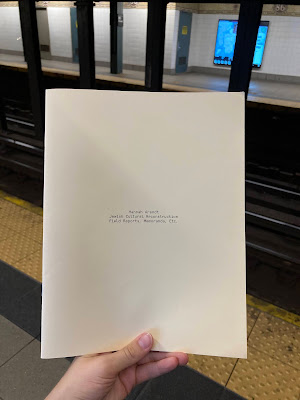 ARCA,Aubrey Catrone,Edgar Tijhuis,Italy,provenance,Study abroad
ARCA,Aubrey Catrone,Edgar Tijhuis,Italy,provenance,Study abroad
 No comments
No comments
Meet Our Alumni: ARCA PG Cert Spotlight Series — Aubrey Catrone, Provenance Researcher and ARCA Alumna
What motivated you to enroll in ARCA’s Postgraduate Program?
From a young age, I was very passionate about art history and history in general. I believed, and continue to believe, that every work of art has a story to tell. And that story is rooted in an object’s unique history.
As an undergraduate, I really had no idea how to turn this passion into a career. That is until the field of provenance research captured my attention - the perfect avenue through which to marry my interests. And it was the discovery of the ARCA post graduate program that I knew would help me turn my passion into professional practicality.
Can you describe a moment in the program that had a lasting impact on you—personally or professionally?
When my class visited the Etruscan necropolis of Cerveteri, we saw evidence of looted tombs and pottery fragments strewn across the forest floor. This gave a chilling context to the laundering of art objects that have been ripped from their original locations and later emerge on the fine art market. And, it reinforced my passion for ensuring that art objects traverse the art market with a correct and complete biography.
What was your favorite course or topic, and why did it stand out?
While not a course when I originally took the course in 2015, but Marc Masurovsky’s provenance course has become a favorite of mine. Marc’s experience in the field is unparalleled. And, he fosters lively discussions where students can explore the intricacies of issues that are often reduced to a bulleted list of names.
How did the international nature of the program influence your learning experience?
The international nature of the program exposes students to a myriad of professional and cultural backgrounds. From those who have managed cultural heritage sites to law enforcement to auction house representatives, ARCA undermines the “victimless” crime narrative, exposing students to the myriad perspectives and long-lasting effects of art and cultural heritage crime.
Did the program change or shape your career path?
Absolutely! I entered the ARCA Program seeking to better understand how I could enter the world of provenance research. During the program, I was exposed to foundational knowledge that I continue to use in my day-to-day practice. ARCA also introduced me to a community of professionals that helped shape my career path after the program. For example, I found volunteer and internship opportunities through the ARCA networking community. I am also still close with many of my classmates, even working with some on a regular basis, over ten years later.
What was it like to live and study in Amelia, Italy?
Given the location and size of the town, Amelia offered the perfect environment to live and breathe art crime while also fully immersing myself in a traditional Italian lifestyle.
What advice would you give to someone considering applying for the 2026 programs?
In my opinion, ARCA is the most practical post-graduate program focusing on art crime and cultural heritage protection available. All classes are taught by experience professionals with real-life experience in their course topics. For example, students learn how to identify and investigate red flags in provenance entries from experts who have worked on actual restitution and repatriation cases.
My advice here is to use this exposure to your advantage. The professors are in Amelia to share their knowledge and help train professionals who will advance ARCA’s missions. So - questions, network, and absorb what you can.
How has your understanding of art crime evolved since completing the program?
ARCA helped build the foundations of my understanding of art crime beyond the most well-known sensational cases or films. This is not entirely a world of smash and grab antics like most recently exhibited at the Louvre. In many cases that I work on, we are dealing with questions of fraud, misrepresentation, or lack of documentation. These are often crimes of opportunity that happen at all levels of the art market.
In one sentence: why should someone join ARCA's program?
ARCA welcomes attendees to a community that extends beyond the historic walls of Amelia in its pursuit to advance art crime and cultural heritage protection literacy.
Aubrey Catrone is an art historian, appraiser, and provenance researcher. Aubrey earned an MA in the History of Art from University College London, specializing in the documented histories of art objects. With an art gallery and academic research background, Catrone founded Proper Provenance, LLC to provide her clients with the tools, not only to historically contextualize art, but also to shed light on attribution and legal title within the international art market. She is an Accredited Member of the Appraisers Association of America with a specialization in Impressionist & Modern Art.
Catrone has researched artworks including paintings, works on paper, prints, and sculptures spanning Old Masters to Ultra Contemporary. She has appeared as a guest expert on the History Channel and published her scholarship in a variety of publications including RICS Journals and the Journal of Art Crime.











